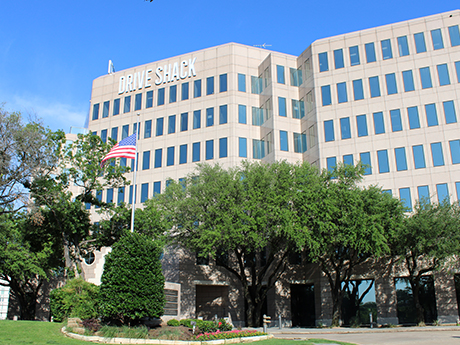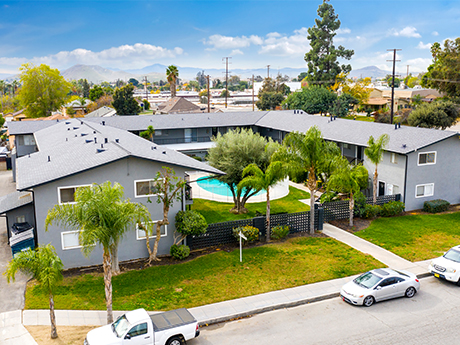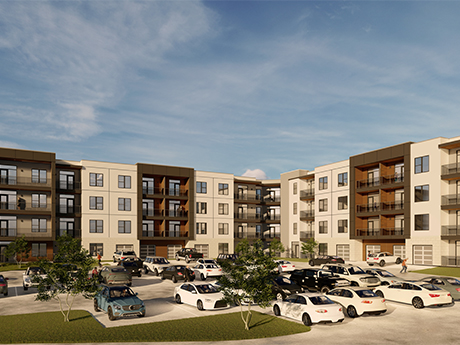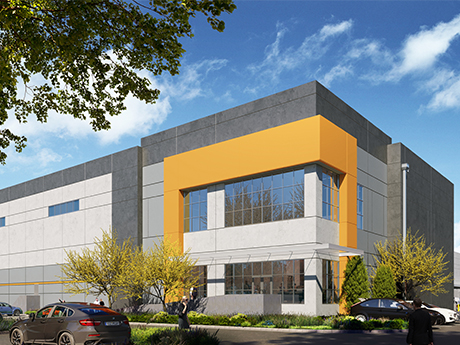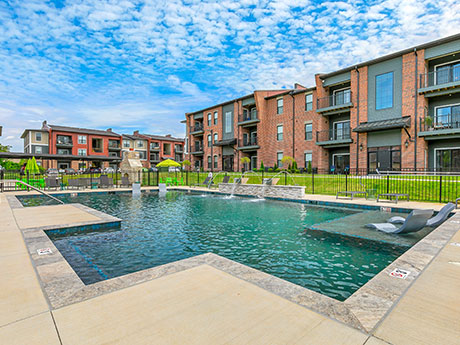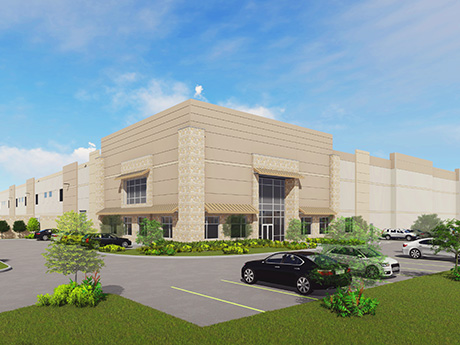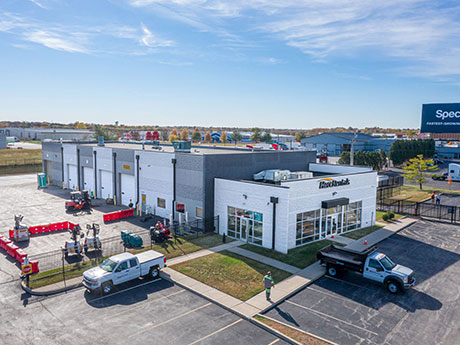By Mike Otillio, research director, Colliers The Dallas office market and North Texas region as a whole continue to evolve as leading destinations for corporate relocations, led in part by a favorable business climate. This reputation as a top landing spot for regional workforce consolidations and outright relocations from other states has helped Dallas become a national leader in some key back-to-work metrics. According to research from security firm Kastle Systems, which monitors keycard, fob and app usage within thousands of office buildings across the country, the average occupancy rate in December across 10 of the country’s biggest markets was 40.6 percent. Dallas was one of the 10 markets tracked in the report, posting an above-average occupancy rate of 52.3 percent. The basic business-friendly climate and healthy pace of job and population growth, along with evidence that users are making stronger pushes to return to their workspaces, have accelerated the market’s office investment sales recovery for value-add, core-plus and stabilized product. Barring any unforeseen circumstances, such as a prolonged spike in cases from the Omicron variant, we expect this trend to continue through 2022. Dallas recorded several notable sales of iconic office assets in 2021, plus numerous deals for suburban …
Market Reports
Institutional Money, Private Investors Continue to Flock to Inland Empire Multifamily Market
by Jeff Shaw
By Eric Chen, Senior Vice President, CBRE Multifamily has been a well-performing real estate segment during the past 18 months as demand for housing continues to trump supply in most of California. The Inland Empire has been the recipient of much of this demand within the Greater Los Angeles and Southern California regions due to their economic and population growth. Tenants are also in search of more affordable, quality dwellings outside the urban core. Due to the confluence of these factors, multifamily vacancies in the area are at an all-time low of less than 5 percent. This is exasperated by the fact that new developments are at the lowest level across the nation, pushing rent growth to No. 1. This dynamic is, of course, ideal for investors who seek stable, income-producing investments with potential upside and little risk of oversupply. We do expect additional apartment properties to be built in the coming year or two, which will create more investment opportunities and provide more options for tenants who are new to the region or relocating from within. Looking back on this year, we have seen a number of large institutional-sized transactions between $25 million and $100 million, with investors ranging …
By John Griggs, co-founder, co-CEO, Presidium Everything is bigger in Texas, including the opportunity for apartment investment, development and absorption — and the nation is catching on. In 2021, Dallas-Fort Worth (DFW) again led the country in the number of multifamily units delivered, adding more than 20,000 new residences for the fourth year in a row. With the thriving economy, lower taxes, central location and an influx of people moving to the area via natural net migration and corporate relocations, it’s not surprising that the demand for apartment units is at an all-time high. A study from RealPage reported that the issuance of North Texas apartment building permits saw a 27 percent uptick in the 12-month period between September 2020 and 2021, one of the heftiest increases among the 10 largest U.S. markets. While the hyper growth the DFW area is experiencing is a positive thing, it’s shaping the economic landscape so rapidly that developers have to adapt efficiently and effectively. Supply chain issues and production bottlenecks are further complicating this equation. Desirability Brings Demand A clear benefit for us in the current North Texas real estate industry is that population, job opportunities and incomes are surging. The flood of …
WREB recently sat down with Tom van Betten, vice president of Matter Real Estate Group. The San Diego-baseed real estate development company currently has 2.5 million square feet of industrial projets either in development or owned by Matter. One of those four projects is Matter Logistics @ North 15, a 930,000-square-foot warehouse/distribution project in North Las Vegas that spans two buildings. Below, Van Betten discusses the firm’s attraction to the Las Vegas Valley, where he sees the industry heading and how Matter is able to find developable land in tight markets. WREB: What about the North Las Vegas submarket is attractive to Matter? Van Betten: Right now, Matter is focused on scale and land availability. North Las Vegas is currently where the larger available land parcels are — or were. I say “were” because there is a real shortage of land that has the infrastructure to develop, such as power and water. On the scale size, the tenants moving to Las Vegas continue to grow in size. To accommodate that demand, we are focused on larger sights. WREB: How were you able to acquire more than 42 acres for the new Matter Logistics @ North 15? As you mention, transactions of that size are …
By Philip Levy, senior managing director, investments, Marcus & Millichap The Dallas retail climate is more favorable entering 2022 than it has been for most of the COVID-19 crisis. Overall, the marketwide retail vacancy rate fell 50 basis points during the first three quarters of 2021, ending at an even 6 percent in September. Nevertheless, that rate is about 100 basis points above the pre-pandemic level. A strong rebound in tenant demand is helping lower vacancy, however, with net absorption across the opening nine months of 2021 totaling more than 2.2 million square feet, compared with a net loss of 1.5 million square feet in 2020. Additionally, the construction pipeline has shrunk considerably, helping mitigate supply-side pressure as the market bounces back. As of the fourth quarter of 2021, less than 1 million square feet of new retail product with an expected completion date in 2022 was under construction in the greater Dallas area. This is a sharp contrast to the 2 million-plus square feet that developers delivered in each year between 2014 and 2020. Strengthening demand drivers amid a reduction in development suggest that downward pressure on vacancy will continue in the coming quarters. New Households Spend Near-term uncertainty …
Fueled by a trifecta of favorable cap rates, an underserved apartment market and sharp increases in market demand, St. Louis is starting to gain momentum with the potential to become a new multifamily hotspot. As investors and developers take note, capital that typically has been focused in higher growth markets on the coast and cities like Chicago and Nashville is starting to flow into the Gateway City. The fruit of these investments is now coming to market. Despite 20-plus percent increases in construction costs, 24 percent more units — 2,057 total — were built in 2021 compared with St. Louis’ five-year annual average. Nearly 4,000 additional units are under construction in the St. Louis region. Population, personal income and job growth are the key economic drivers of multifamily unit demand. In 2020 and 2021, all three of those markers are finishing on the upside in St. Louis after pandemic dips. Employment growth is particularly promising. After slight employment declines over the last five years, St. Louis employment has grown at an average annual rate of 2.7 percent for the last four quarters. CBRE forecasts positive growth of 2 percent for the next two years and 0.8 percent for the next …
By Conrad Madsen, SIOR, co-founder and partner, Paladin Partners; and Kipp Collins, partner, Paladin Partners Just 20 years ago, the conventional wisdom and commonly held belief throughout the Dallas commercial real estate scene was that office and retail were preferable sectors to be in versus industrial. Looking back and reflecting on how industrial has gone from ugly duckling to white swan in just 20 short years, we can’t help but be glad that we didn’t take that advice. Led by Amazon, e-commerce has truly changed the world, and certainly industrial real estate by extension. Everyone talks about how e-commerce is what’s driving the explosion of warehouse and distribution center development and absorption across Dallas-Fort Worth (DFW) and beyond. But the fact of the matter is, e-commerce still only accounts for about 14 percent of total retail sales, according to data from the U.S. Census Bureau. Think about that for a moment — the current proportion of 14 percent leaves a tremendous amount of room for additional growth. Demand for warehouse and distribution space is through the roof; developers can’t build warehouses fast enough these days, and yet the market is nowhere close to reaching its peak. Inventory Growth There is …
When I recently looked into a prime site in Atlanta’s bustling West Midtown district on behalf of one of my restaurant clients, I quickly realized that several restaurants were eyeing the space. There were six other restaurant groups interested in leasing the space, creating a bidding war at rental rates far higher than my client wanted to pay. Heated competition for available restaurant spaces is by no means unusual in the Atlanta market these days, particularly for intown Atlanta, or the portion of the city located within the Interstate 285 loop and containing some of the city’s most urban, in-demand neighborhoods including Old Fourth Ward, EAV (East Atlanta Village) and Poncey-Highland. It’s been a rollercoaster stretch for the retail and restaurant sectors since the onset of the COVID-19 pandemic. Large decreases in sales at the outset were followed by a substantial recovery by early 2021, only to be followed by a setback in some markets over the summer caused by the more contagious Delta variant. Despite the challenging conditions, Davis said his clients have been forging ahead with their expansion plans. These clients have benefitted from their history of strong sales and the ability to adjust their service models (such …
By Tony Phu, Senior Executive Vice President, Colliers Rental rates and land values continue to outpace construction cost inflation, driven by the insatiable need for industrial and distribution space across the entire Western U.S. This is especially true in Southern California where a critical mass of population/tenant demand and high barriers to entry for development have created an exacerbated supply and demand imbalance. Scarcities of land for new development, as well as existing and under-construction buildings, are the main drivers. Entitlements are difficult to secure with a timeline between 24 and 30 months from start to finish. As a result, scarcity will remain the name of the game, and tenants will continue to pay increased costs to secure a building. With roughly 29 million square feet expected to deliver over the next five quarters, vacancy should remain flat as demand stays high for these buildings. Lease rates will continue to rise as existing tenants renew while expanding tenants compete for limited space that comes to market. Total net absorption for 2021 will break the record set in 2018, likely falling just shy of 30 million square feet. Activity levels in both the Inland Empire East and West remain about the same. There are so …
This past year, many commercial real estate sectors and geographies that had been affected by the initial impact of pandemic-induced shutdowns demonstrated improvement. Across Missouri, we saw very robust levels of sales activity, as well as new construction and development — with more than $2.4 billion in overall commercial real estate sales volume through the end of third-quarter 2021. Although statewide growth was reported across all property types and sectors, industrial was especially strong, while retail emerged with slightly less consistency, but was positive nonetheless. The forecast for 2022 is bright, especially as retailers announce expansion plans and developers break ground on new projects. St. Louis is central to growth As an important secondary U.S. market, St. Louis and the surrounding areas are experiencing high levels of demand and activity. In the first three quarters of 2021, the St. Louis market reported $1.7 billion of overall commercial real estate sales volume, representing more than 70 percent of statewide activity. These statistics illustrate the sentiment of today’s active buyers who agree that St. Louis is a stable and attractive market for investment. Within the metro area, St. Charles County stands out as one of the fastest-growing counties in the country, reporting …


